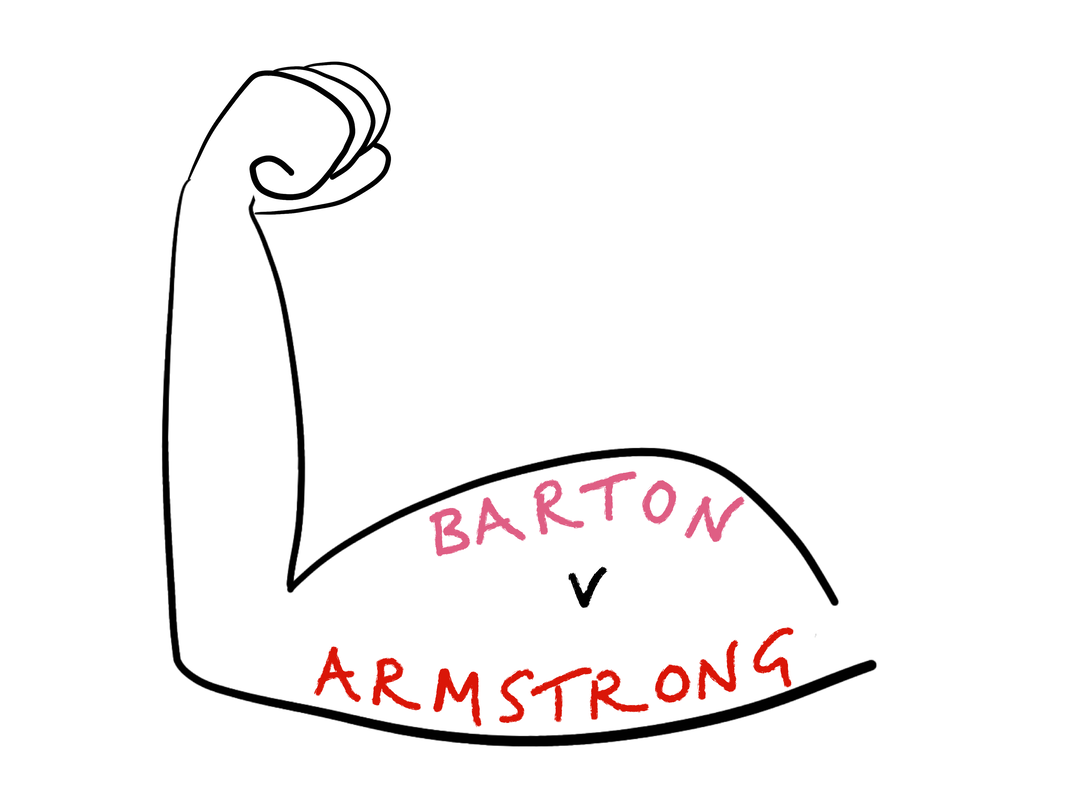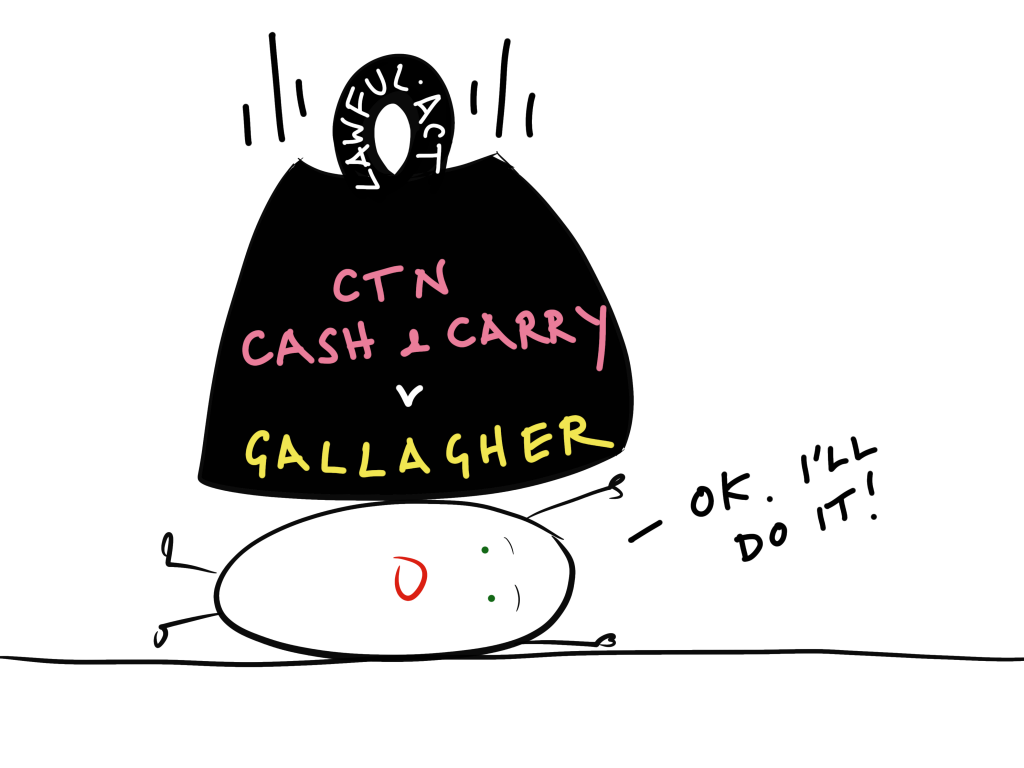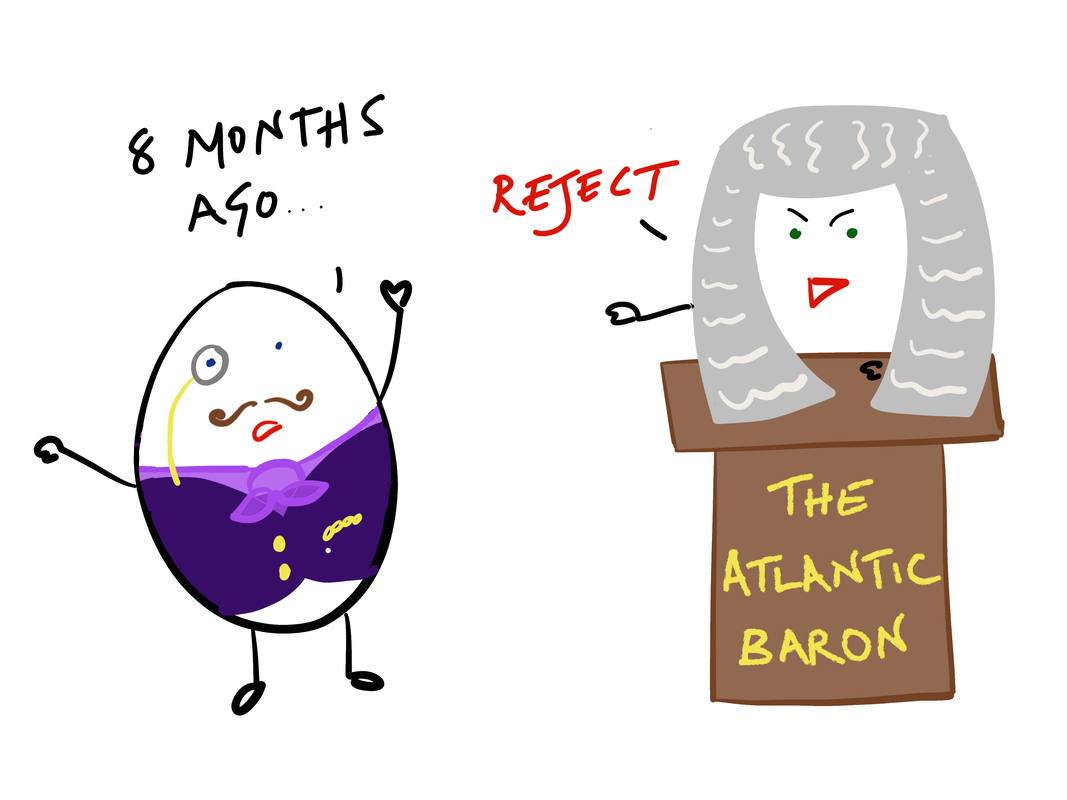JUMP TO: DURESS TO THE PERSON – Barton v Armstrong – DURESS TO GOODS:Astley v Reynolds | Skeate v Beale – ECONOMIC DURESS– Times Travel v Pakistan International Airlines – ILLEGITIMATE PRESSURE – Universe Tankships v International Transport Workers’ Federation | Atlas Express v Kafco | DSND Subsea v Petroleum Geo | CTN Cash and Carry v Gallagher | The Cenk K | R v HM AG for England and Wales | Kolmar v Traxpo – SIGNIFICANT CAUSE – Huyton v Peter Cremer
– NO PRACTICAL CHOICE – B&S Contracts and Design v Victor Green | Carillion Construction v Felix – PROTESTING THE PRESSURE – The Atlantic Baron
REVISE | TEST
DURESS
Duress occurs when one party forces the other into a contract against their will. Originally this was limited to duress to the person but today most of the case law deals with economic duress.
The doctrine of duress was developed relatively late in English contract law. While duress to the person has been more straight forward, the requirements of economic duress were only recently confirmed in Times Travel (UK) Ltd v Pakistan International Airlines Corporation (2021).
A successful claim of duress will make the contract voidable, not void.
DURESS TO THE PERSON
Duress to the person occurs if a person is subjected to threats of physical violence to make them agree to entering a contract. The leading case is Barton v Armstrong (1976) (Privy Council Australia).

Barton was the managing director of a company and Armstrong was the chairman and largest shareholder. Barton and the other directors wanted to remove Armstrong from the company because they felt that Armstrong was abusing certain privileges. He reacted aggressively to their tactics, forcing Barton to buy him out by threatening him and making him believe that he had contracted a hitman. The court found that there had been duress to the person and it was enough that it had been one factor in Barton’s reason for entering into the contract, it did not have to be the sole or main reason.
DURESS TO GOODS
This type of duress is the threat of damage to the victim’s goods rather than to his person. This can also be done by detaining a person’s goods.
The case of Astley v Reynolds (1731) (Court of the King’s Bench) found that money paid to release goods which had been unlawfully detained could be recovered. Here a pawnbroker refused to release the pawned goods until Astley paid back far more than the legal rate of interest. The contract was held to be voidable. However, the case of Skeate v Beale (1840) (Court of the Queen’s Bench) contradicted this when it was held that the unlawful detention of another’s goods does not constitute duress. Here, a landlord seized the tenant’s good to force the tenant to sign a repayment agreement. The court said that duress to goods does not render an agreement voidable.
However, in The Siboen and The Sibotre (1976) (HC) Kerr J refused to follow Skeate v Beale (1840). In The Evia Luck (1992) (HoL) Lord Goff also stated that the finding in Skeate v Beale, that only duress to the person would render a contract voidable, was wrong. Duress to goods can form the basis of a claim and can render the contract voidable.
ECONOMIC DURESS
Economic duress is a fairly new area of law. Before its appearance cases in this category would have been dealt with as contracts lacking consideration (e.g. Stilk v Myrick). The concept first appeared in The Sibeon & The Sibotre (1976) (HC) and was developed in Pao On v Lau Yiu Long (1980) (PC).
The current rules for economic duress were set out in DSND Subsea v Petroleum Geo Services (2000) (HC) and recently confirmed in Times Travel (UK) Ltd v Pakistan International Airlines Corporation (2021) (SC):
- the application by the defendant of illegitimate pressure,
- which caused the claimant to enter into the contract,
- when the claimant had no reasonable alternative but to give in to that pressure.
|

For a description of the case click here.
Each of these requires some further explanation.
ILLEGITIMATE PRESSURE
The pressure exerted on the victim must be illegitimate and beyond ‘the rough and tumble of the pressures of normal commercial bargaining’, Dyson J, DSND Subsea v Petroleum Geo (2000) (HC).
Lord Hoffmann in R v A-G for England and Wales (2003) identified two types of illegitimate action: lawful and unlawful. Lord Hoffmann said that:
‘Generally speaking, the threat of any form of unlawful action will be regarded as illegitimate. On the other hand, the fact that the threat is lawful does not necessarily make the pressure legitimate.’
UNLAWFUL ACTS
In general illegitimate pressure comes from the threat of an unlawful act (whether criminal or civil, i.e. breaching the contract). When it comes to the threat of a crime or tort, it is easier to classify such pressure as ‘illegitimate’. Threatening someone with contractual breach, however, is less straightforward. The courts will consider not only the threat itself but the manner in which it was made, both or either can amount to illegitimate pressure.
Consider the cases below…

In Universe Tankships of Monrovia v International Transport Workers’ Federation, The Universe Sentinel (1983) (HoL) a trade union threatened to refuse the use of their tug boats unless the ship owner made a payment to the trade union. They justified this action as being legitimate under the the Trade Union and Labour Relations Act 1974. The court found this to be illegitimate pressure but were divided on why. Some judges felt that the trade union’s action could not be granted immunity by the statute as the statute required that any such payment be demanded in contemplation of a trade dispute. There was no present trade dispute, therefore the threat was unlawful. Others judges thought that the trade union’s demand did fall under the statute on a broad interpretation but to use it in order to commit blackmail was illegitimate.
In Atlas Express v Kafco (1989) (HC) Atlas were road hauliers who contracted with Kafco to transport baskets to branches of Woolworths. The price per unit was based on an estimate of 400-600 units per lorry. Atlas underestimated the size of the baskets to be carried and could only transport 200 units per lorry. Atlas refused to deliver the baskets to Woolworths unless Kafco agreed to a new minimum price. They did this by sending a truck to Kafco with a letter saying that the truck would leave empty if Kafco did not agree to the new price. Kafco did not want to lose their very important contract with Woolworths so agreed. Atlas’ behaviour was held to be illegitimate.
It is possible for an unlawful act to be legitimate. In DSND Subsea v Petroleum Geo (2000) (HC) DSND threatened to stop working (a breach of the contract) but their reason for doing so was because Petroleum Geo did not have the correct insurances and indemnities in place. This was seen as a legitimate use of unlawful act pressure.
LAWFUL ACTS
Can lawful acts or threats ever constitute illegitimate pressure?
Lawful act duress can be found to have occurred, but only in limited circumstances. Claimants would have to provide evidence of ‘morally reprehensible behaviour’ which rendered the contract ‘unconscionable’ (Times Travel (UK) Ltd v Pakistan International Airlines Corporation (2021) (SC)).

Times Travel was a travel agency whose business relied almost entirely on selling tickets for Pakistan International Airlines Corporation (PIAC). In 2012 several travel agencies, although not Times Travel, brought claims against PIAC for unpaid commission which PIAC refuted. Later that year PIAC reduced Times Travel’s fortnightly quota of tickets from 300 to 60 and gave notice of the termination of their contract. This would have put Times Travel out of business so they agreed to a new contract offered by PIAC to all its agencies that included a clause waiving any existing claims for unpaid commission. One of the directors of Times Travel had been shown a draft of the new contract a few days beforehand but PIAC had refused his request to take a copy with him in order to discuss it and obtain legal advice. Times Travel accepted the terms but then claimed it entered the new deal under economic duress. It then sought to recover, what it claimed were, unpaid commissions.
The Supreme Court upheld the Court of Appeal’s decision that the claimant had failed to establish economic duress. They agreed that Times Travel entered into the new contract because of PIAC’s threats and that they had no reasonable alternative but they had not been able to show that the pressure was illegitimate. PIAC had terminated their contracts legitimately and genuinely did not believe that they owed any unpaid commission, they had acted in good faith.
Commercial parties are generally entitled to pursue their own self-interest so a finding of lawful act duress should be rare.
Lord Hodge explained that there are two circumstances in which the English courts have recognised lawful act duress. The first is where a defendant uses their knowledge of the claimant’s criminal activity, or that of a person close to the claimant, to threaten the claimant. Though originally viewed as an example of the equitable doctrine of undue influence, this is now seen as lawful act duress. The second is where the defendant, having exposed himself to a civil claim by the claimant, uses reprehensible means to manoeuvre the claimant into a position of vulnerability to force him to waive his claim.
OTHER EXAMPLES
In CTN Cash and Carry v Gallagher (1994) (CoA) the court agreed that it would be possible for a lawful act to be the basis for illegitimate pressure, although in this case no duress was found.

Gallagher delivered CTN’s consignment of cigarettes to the wrong place. Before they could be retrieved they were stolen. Gallagher incorrectly believed that CTN had assumed the risk for the cigarettes and asked them for payment for the delivery. It had been agreed in their contract that credit facilities could be removed at any time and Gallagher threatened to do this if CTN did not pay. CTN paid and then tried to reclaim the money arguing duress. The court found no duress because the threat, although coercive, was not improper and Gallagher had genuinely believed that the risk lay with CTN. Gallagher were trying to reclaim money they believed to be theirs, rather than trying to extort extra money from CTN.
A lawful act was found to be illegitimate in Progress Bulk Carriers v Tube City (The Cenk Kaptanoglu) (2012) (a.k.a The Cenk K) (HC). The court took into consideration Progress Bulk’s illegal breach of the contract (double booking charter of their boat) as well as their legal but illegitimate actions. Tube City were assured that another boat would be found but Progress Bulk delayed so much that in order to fulfil their contract with a third party Tube City had no alternative but to agree to Progress Bulk’s disadvantageous terms for charter of another vessel.
LEGITIMATE PRESSURE
The case of R v HM Attorney-General for England & Wales (2003) (PC New Zealand) provides a good example of what the courts will consider legitimate pressure.

A member of the SAS claimed that illegitimate pressure had been brought to bear on him to sign a confidentiality agreement. He was threatened with being sent to a regiment on lower pay, a regular form of punishment. He was also told that he could not seek legal advice before signing. However, the court found that even though there was ‘overwhelming pressure’ this was a legitimate function of the military and it was not unreasonable for them to want everyone to sign. In addition, the soldier was not ordered to sign, he had a practical alternative available to him, being sent to the other regiment.
BAD FAITH?
If a threat was made in bad faith it is more likely to be seen as illegitimate but it will not be a definitive factor. In the same way a threat made in good faith will not automatically be legitimate. In Kolmar Group v Traxpo Enterprises (2010) (HC) Traxpo was contracted to sell methanol to Kolmar at a fixed price. When the price of methanol started to rise Traxpo saw that their profit on the contract would be reduced so they amended the agreement. Despite the breach Kolmar had no option but to agree as their ship was being charged for overstaying its slot and they had a large onward contract for the methanol. The bad faith of Traxpo, changing the contract in order to make more money, went towards the finding of illegitimate pressure.
In Times Travel (UK) Ltd v Pakistan International Airlines Corporation (above), the court also considered the presence of bad faith. The Supreme Court stated that there are no general principles of ‘inequality of bargaining power’ or ‘good faith’ in English law. Unequal bargaining power is generally left to the legislature to decide (e.g. in consumer contracts) while good faith is only relevant in very limited circumstances. Leverage and/or pressure applied in commercial negotiations will rarely meet the required standard of ‘illegitimate pressure or unconscionable conduct’.
SIGNIFICANT CAUSE
The illegitimate pressure must have been a significant cause, ‘but for’ the pressure the party would not have entered into the contract. It must be ‘decisive or clinching’ (Huyton v Peter Cremer (1999) (HC)).

NO OTHER PRACTICAL CHOICE
The requirement for pressure used to be that it vitiated the party’s consent, making their agreement to enter the contract involuntary. This has changed in recognition of the fact that parties often give their agreement under pressure. Therefore the test is now whether the party had any practical alternative available to them. If not then there was sufficient pressure.
The case of B & S Contracts and Design v Victor Green Publications (1984) (CoA) illustrates this well.

B & S was employed by Victor Green to erect stands at a trade show which were then rented by exhibitors. A week before the show B & S refused to work unless their pay was increased. Victor Green agreed but then deducted the extra pay from the final payment. B & S sued. The court found that Victor Green had acted under duress; the only alternatives were to find another company (not possible in a week) or have no stands at the trade show. Neither of these were deemed practical alternatives by the court.
In Carillion Construction v Felix (2001) (HC) illegitimate pressure was put on the claimants by threats to withhold deliveries. The only alternative to agreeing was to seek an injunction, as this would have taken 6 weeks it was not deemed a practical alternative.
PROTESTING THE PRESSURE
The party subjected to the illegitimate pressure must protest at the time or shortly after. Courts are aware that it is not always possible to protest at the time but a long delay after the event may negate any chance of pleading duress and be seen as constructive affirmation of the new contract. A good example is North Ocean Shipping v Hyundai Construction, The Atlantic Baron (1979) (HC).

Hyundai were building a boat, The Atlantic Baron, for North Ocean Shipping. They threatened to breach the contract unless they were paid more for the ship. North Ocean Shipping agreed at the time as they needed the ship finished on time but then waited 8 months after the completion of the contract to protest and try to recover the extra payment. This was deemed too long and a constructive affirmation of the contract.



























